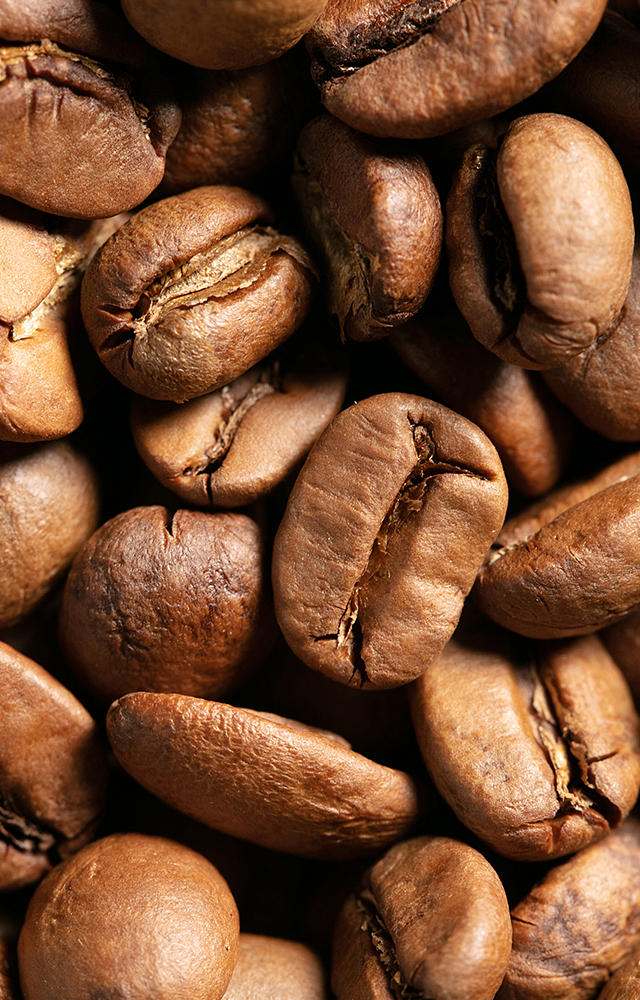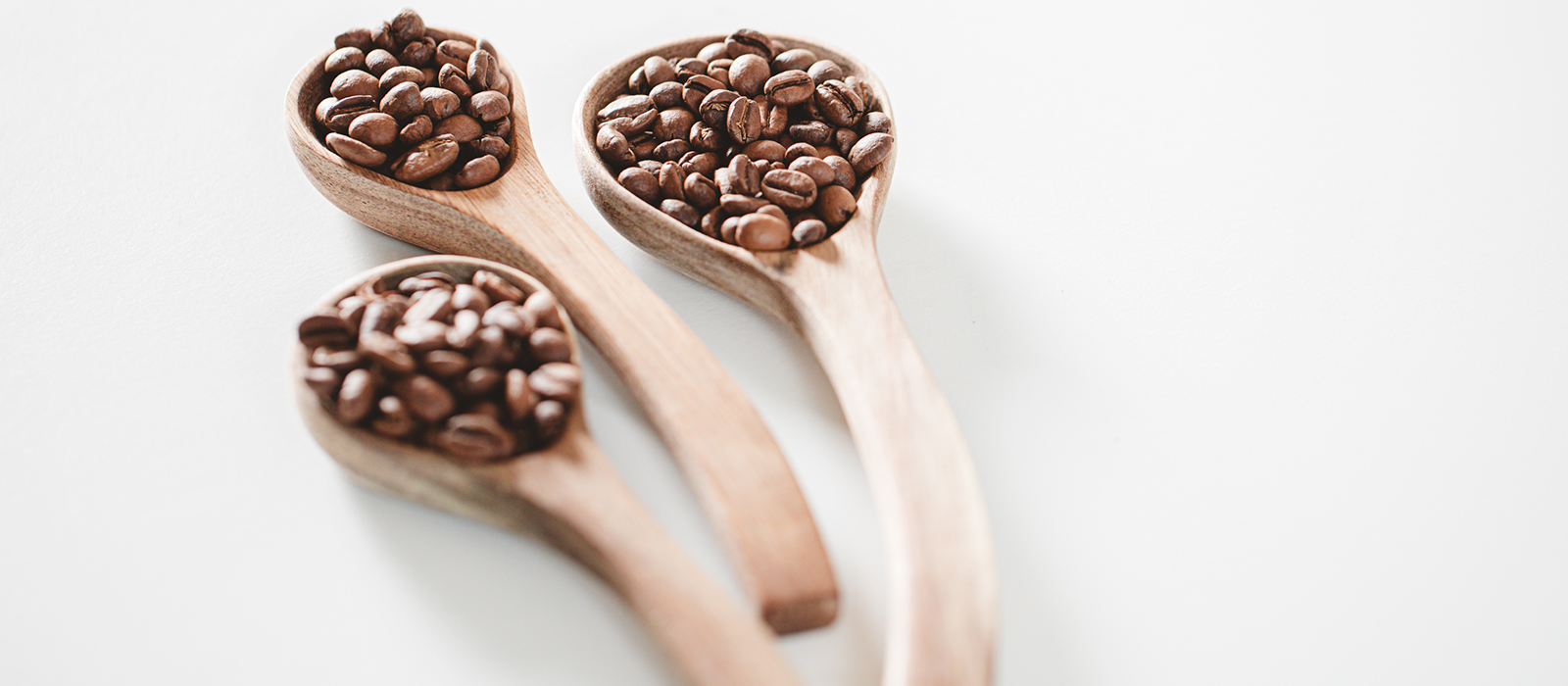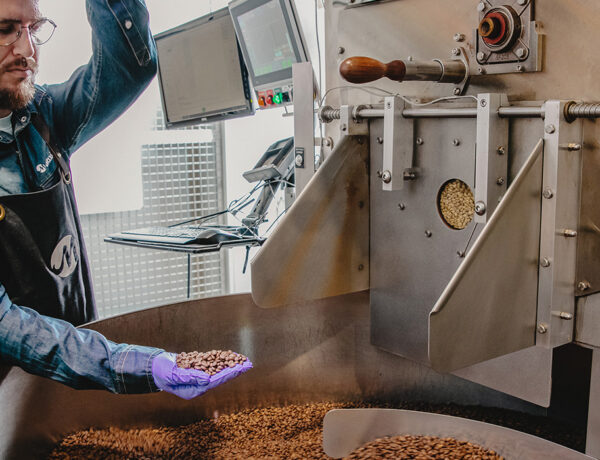
- Home
- Choosing Your Coffee Beans: What You Need to Know

Choosing Your Coffee Beans: What You Need to Know
Written by Jordan
Reading time 7 minArabica or robusta beans? Brazilian or Ethiopian origin? Sweet or fruity notes? It’s easy to get lost among the thousands of products, brands and types of coffee on the market. So how should you pick your coffee beans? Here are our tips and tricks for finding the perfect coffee for your needs.
Our video
Our Youtube channelHOW TO CHOOSE YOUR COFFEE BEANS
Before you finally bought that great bean-to-cup coffee machine you had your eyes on, chances are you owned a coffee pod machine.
All you had to do was follow the brand’s guide and choose by intensity or aromatic notes. You knew exactly how your cup was going to taste and how strong your drink would be by going off the colour of the pod alone.
With a bean-to-cup machine, things can be a bit trickier. With so many coffee bean options out there and the list of information you will find on your bag such as origin, processing method and roast color – how do you make the right choice?
Here’s a step-by-step guide to choosing your coffee beans.
Choosing the right roast colour
The roast colour is one of the most important criteria.
Before they are fit for consumption, green coffee beans need to be cooked. This process is called “roasting”. The colour or degree of roast will depend on how long your beans were roasted.
Be sure not to confuse roast, intensity and strength.
Roast colours affect the balance between bitterness and acidity, and tell you how to brew your coffee.
Intensity is best judged at the same roast level. It gives you an idea of how the coffee will taste in the cup.
Strength mainly takes into account the first impression on the palate, although it also correlates with body and bitterness.
While they are clearly all related, they have their differences. For instance, an intensity 1 and an intensity 5 coffee can share the same roast colour.
On the other hand, the same coffee with a longer roast time will result in a stronger cup.
Roast colours: how to choose?
There are about 6 different roast colours ranging from very light to very dark.
Roast colour depends on the degree of roasting. A very light colour means that the beans haven’t been roasted long. In other words they are lightly roasted. On the other hand, a coffee with a dark colour was heavily roasted and fully cooked.
As explained above, roast colour impacts the result in cup.
- The longer the roasting, the more bitter the coffee which also causes it to lose some of its aromatic potential. The aromas will be masked by empyreumatic aromas, i.e. cooking aromas.
- The lighter the roast, the lighter and more acidic the coffee. Terroir flavors are enhanced, unlike dark roasting which masks or even completely removes terroirs and aromas.
So how do you choose the right roast colour for you? As a general rule, roast colour is chosen according to the brewing method.
- A very light or medium-light roast is generally best suited to filter methods, also known as slow coffee or pour-over. The results will be acidic and fruity with citrus notes.
- A medium to dark roast is better suited to automatic coffee machines with integrated grinders or traditional manual espresso machines.
- Very dark roasts are perfect for Italian-style espresso lovers. They have sweet notes of cocoa or toast.
At MaxiCoffee we believe that the best coffee is the one YOU prefer. So have fun and try all the different roast colours to find the one that suits you best.
Choosing between Arabica and Robusta
Now that you know all about roast colours, it’s time to choose between Arabica or Robusta.
If you’re looking for a coffee with complex, delicate, tangy aromatic notes, 100% Arabica coffee is your best bet.
But if you’re looking for a fuller-bodied coffee, with notes of toast and wood, but also more bitterness and a nice crema, go for 100% Robusta.
For a more balanced coffee, opt for an Arabica/Robusta blend: you’ll get the best of both worlds.
Arabica/Robusta blends are also ideal for gourmet and milky drinks because they retain all the coffee’s aromas.
And for an Italian-style espresso, we recommend a dark to very dark roast, with a 80/20 or 70/30 Arabica/Robusta blend.
Blend or single origin?
Coffee origin is always mentioned on the bag. But what does it actually mean?
A single origin coffee is made from a single variety of coffee. They are more traceable and unique.
A blend, on the other hand, is a mix of different coffees. Blends enable roasters to harmonise coffee tastes and create stable, consistent flavours. They also allow roasters to express their creativity and invent new aromas. As with wine, blending allows for new combinations of aromas.
Choosing between different aromatic families
Another criterion to consider is which aromatic family you prefer.
The terms “aromas” and “aromatic family” refers to flavours naturally present in your coffee (unlike added flavours found in flavoured coffees) and which will emerge during tasting.
And there are many! One coffee contains up to 800 types of molecules; from these, 50 aromatic descriptors can emerge! The SCA (Specialty Coffee Association) has developed a flavour wheel with each taste descriptor that they keep updated.
We’ve simplified this aroma wheel for you, using the following aromatic families: woody, herby, spicy, fermented, flowery, yellow fruit, red fruit or sweet.
In short, the goal here is to define whether you prefer a fruity, sweet or even woody coffee!
Choosing according to processing method
Another factor to consider is coffee processing which refers to the way coffee cherries are processed.
While coffee makers are still experimenting to this day, we can distinguish four main methods. Knowing more about these processing methods will help you choose the right coffee for you.
The natural/dry process
The first is the “dry” or “natural” method. It is used to obtain a coffee known as “natural”.
Coffee cherries are left to dry for 3 to 4 weeks in the sun and laid out on patios, raised beds or on the ground. They are turned regularly to ensure even drying.
Tasting notes include sweet, red fruits, tropical and jam-like notes.
The wet/washed process
The second method is referred to as the “washed” or “wet” process. It produces a “washed” coffee.
Within 12 hours of picking, the pulp is separated from the beans: this is called pulping. Still coated with their mucilage, the beans are placed in washing tanks and stirred continuously for 12 to 36 hours: this is the fermentation process. The beans are then dried.
This process creates an acidic coffee with floral and fruity notes.
The semi-wet process
This method produces a semi-washed coffee.
After sorting, cherries are mechanically pulped and the mucilage is kept. The beans are then washed and dried in the sun.
The Honey Process
This method is relatively new: it first appeared in Panama in the 2000s.
It combines dry and wet methods. Cherries are pulped like in the wet method and then go straight through the drying process. The mucilage is kept on the bean throughout this stage. The sugar in the mucilage is absorbed by the fruit, giving the coffee caramelised notes.
Choose according to your beverage type
Espresso, americano, cappuccino… not all coffee beans are suitable for all drinks and it’s important to know which type of coffee goes with which beverage.
- For an americano, choose 100% Arabica beans with a light or medium roast;
- For an espresso, choose Italian blends with dark roasts;
- For milky caffeinated beverages such as cappuccinos, opt for an Arabica/Robusta blend.
Bonus: Always favour freshly roasted coffee beans
It’s a little-known fact that, once roasted, coffee beans only retain all their organoleptic qualities (taste and smell) for 30 days in a sealed bag. After that, coffee loses its aromas very quickly. It may even become rancid and therefore not as tasty. So always choose a coffee with a clear roasting date and consume it between two weeks* and two months after roasting. *Avoid brewing it immediately after roasting, as coffee continues to release CO2 after roasting. Leave it to degas for a little while.

Now that you’re a true coffee connoisseur, it’s time to select the perfect beans for your needs. Our website features delicious blends as well as coffee bean gift sets if you lack inspiration.
Discover all of our articles



